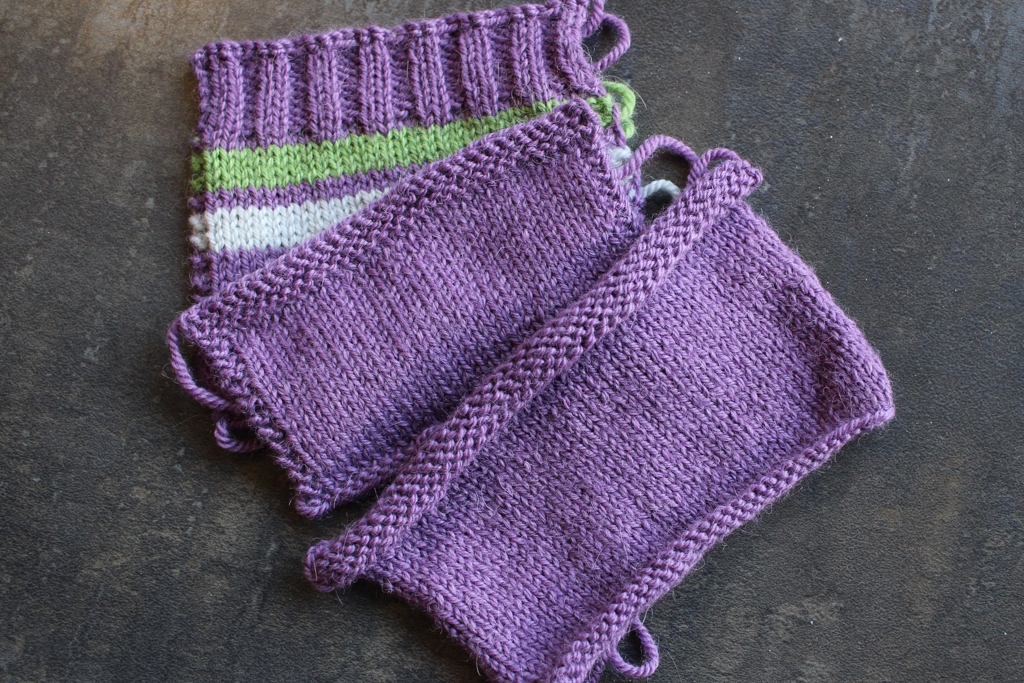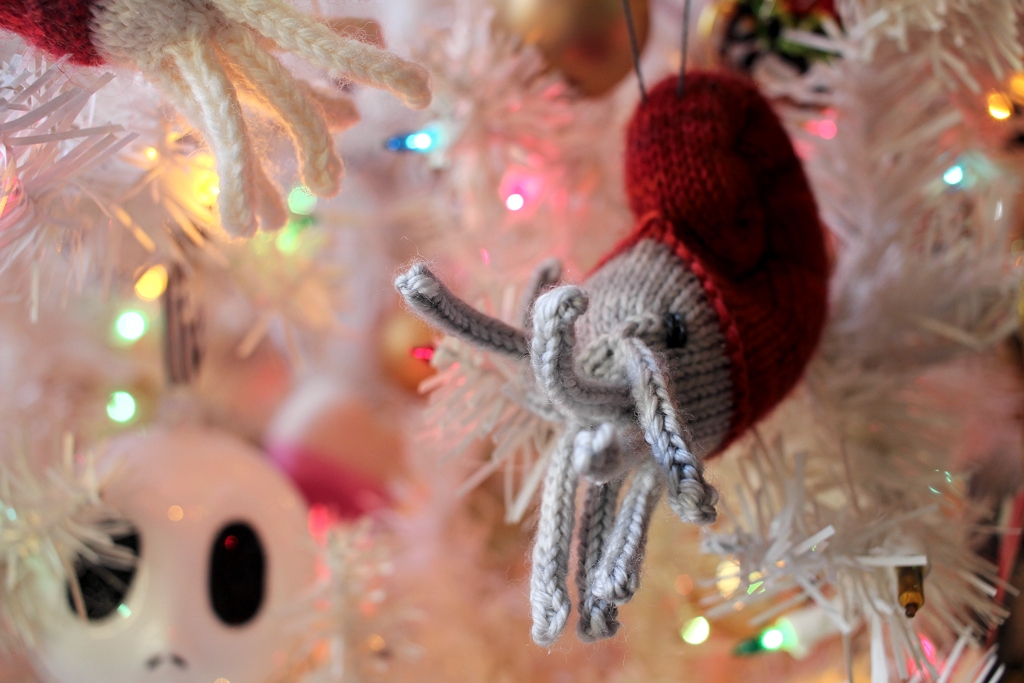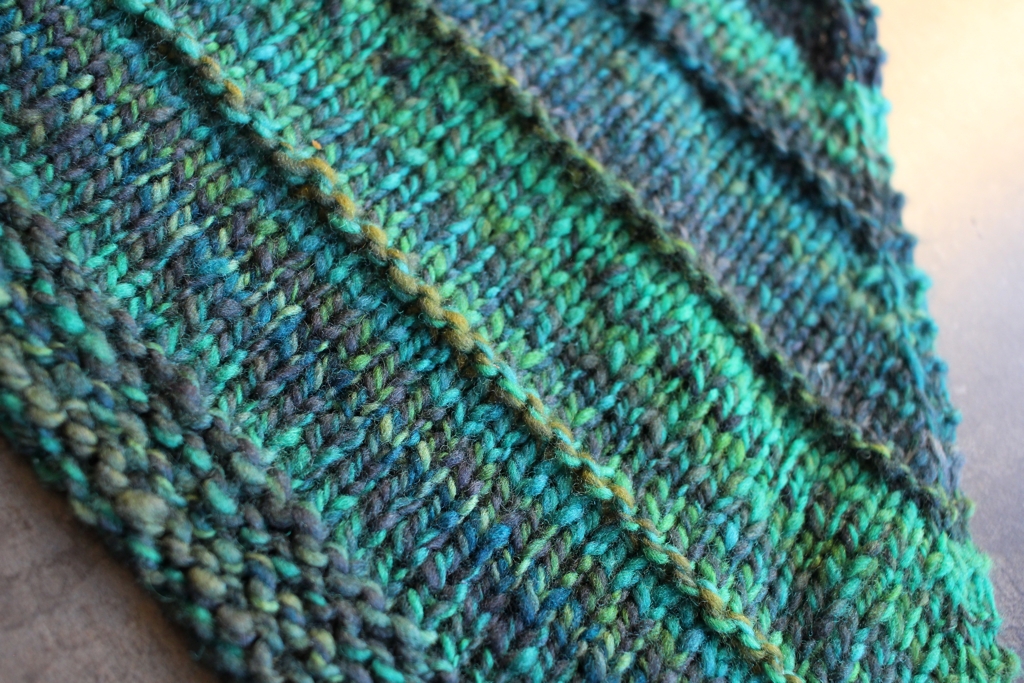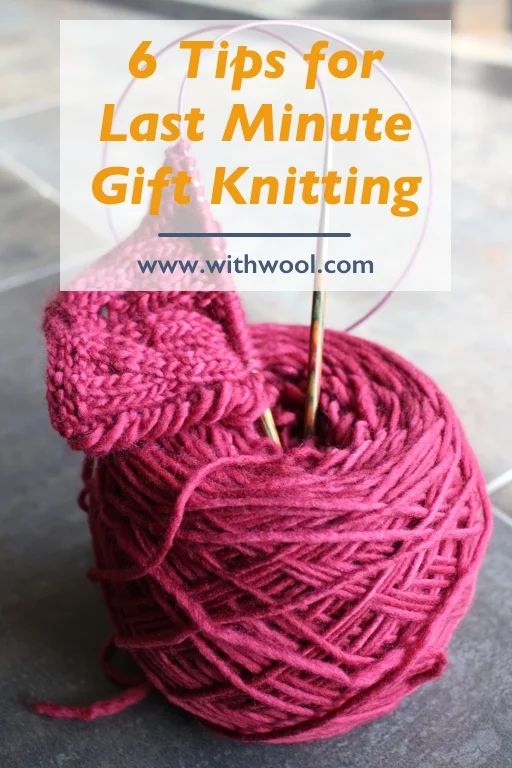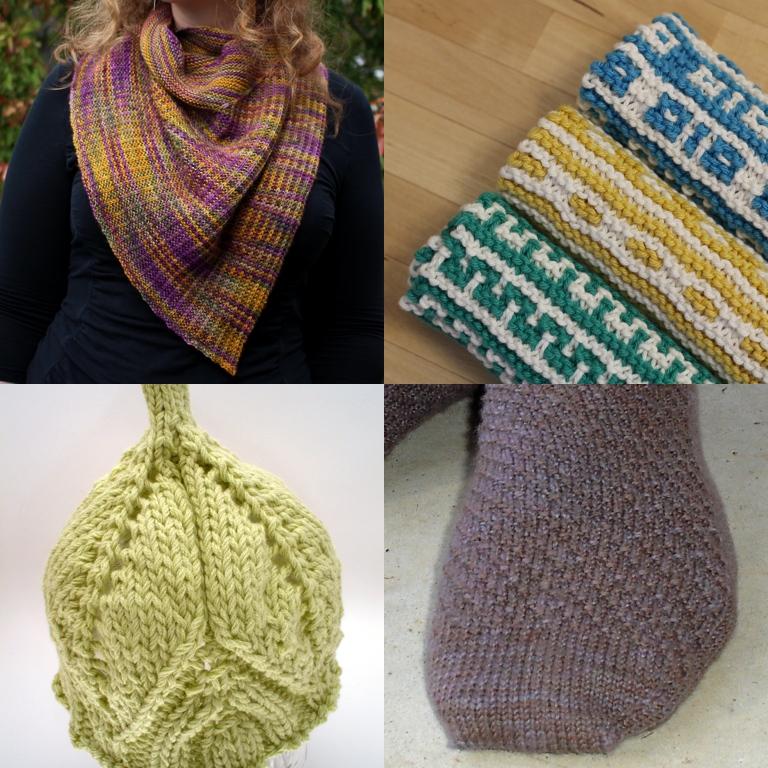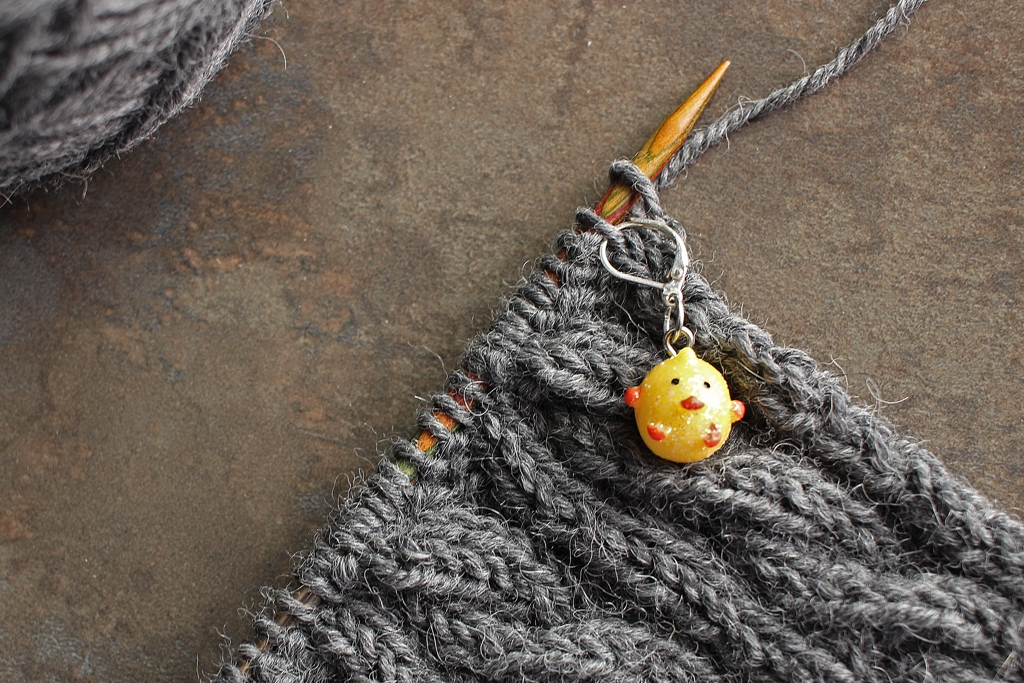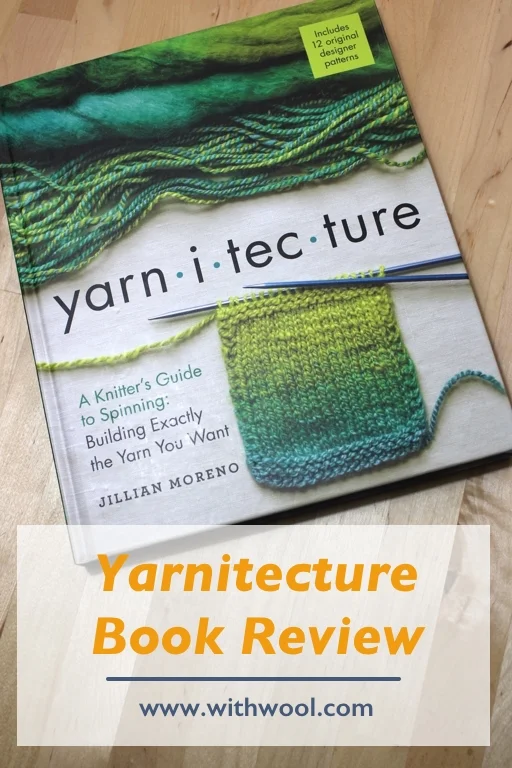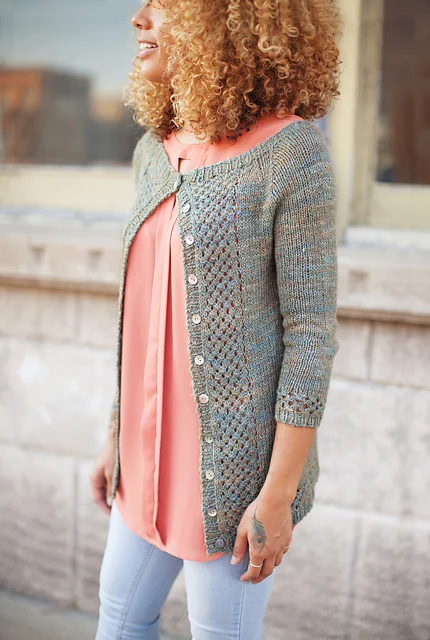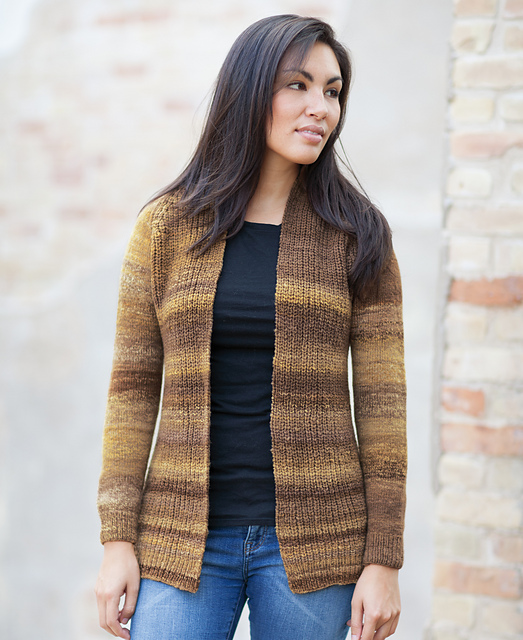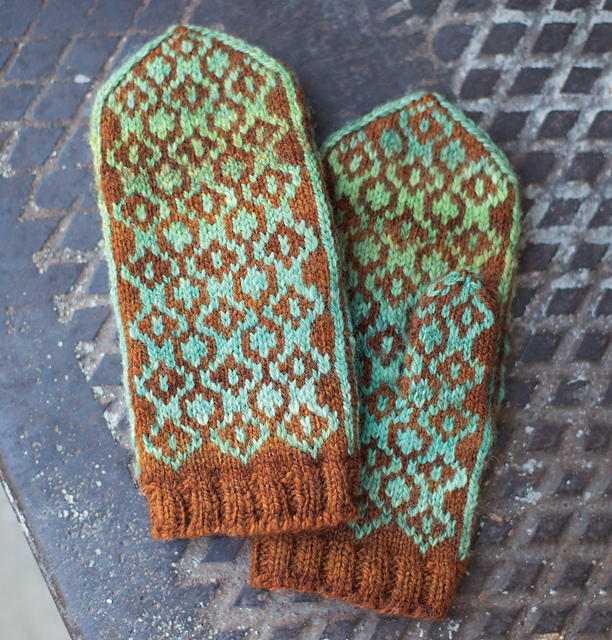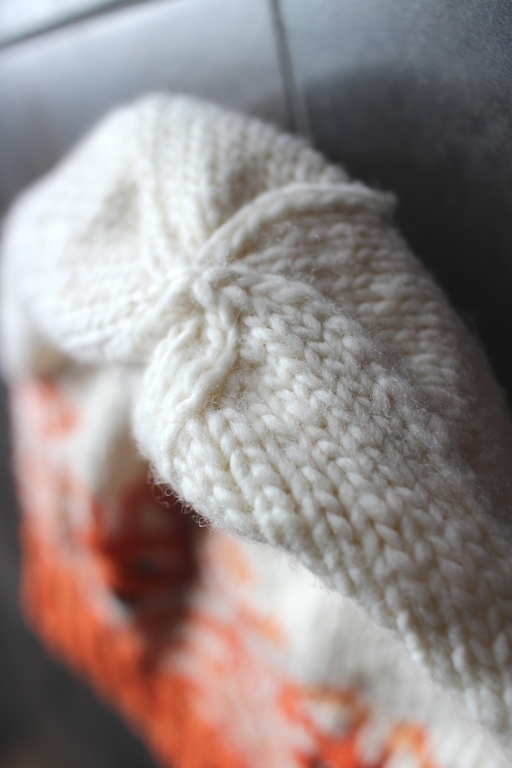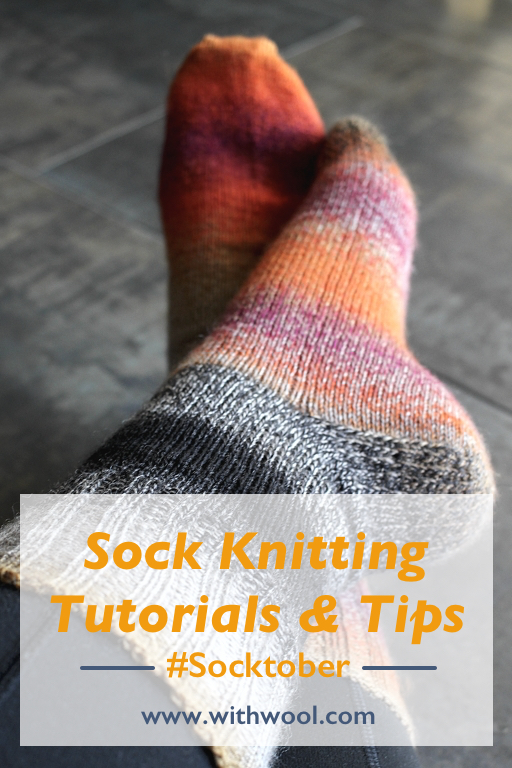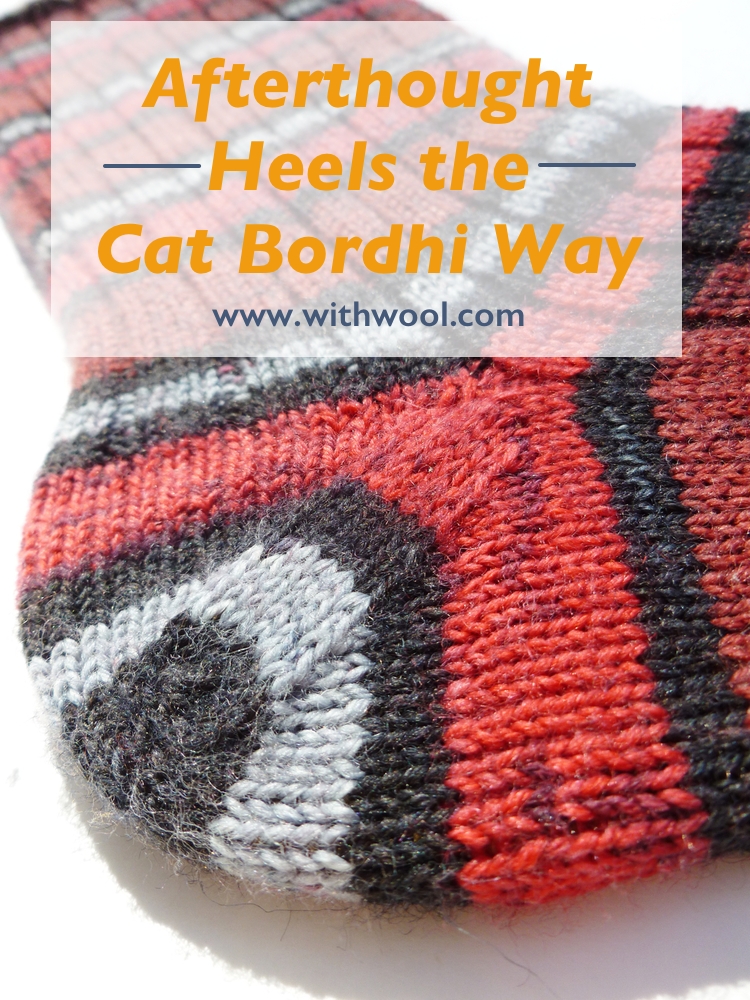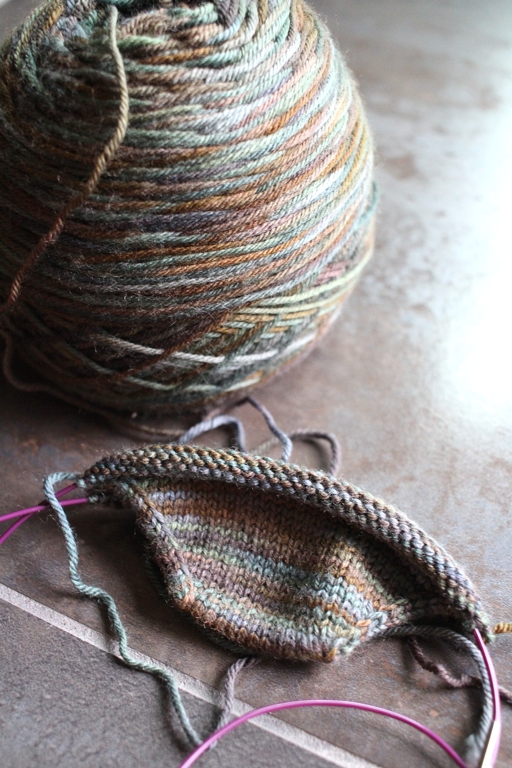A Gauge Swatch Update and Yarn Chicken
/I’ve been working on the Pacific Coast sweater for the past week. The “just one more row” litany has been good motivation to keep knitting. After regularly checking that the stitch counts were correct, I finished the raglan increases and put the sleeves on waste yarn. Now my little WIP is finally starting to look like a cute sweater! And I’m loving the stripes more and more with every row.
Since I’m using this sweater is part of a little swatching experiment, which you can read all about here, here’s an update. The sweater is about 6” from cast on to my current row, and my gauge has remained consistent across the entire length and width. Said gauge still matches up with swatch #3, the un-pinned chunk of stockinette. I was curious if the switch to working fewer body stitches would change my gauge after the constant increasing of the raglan. So far, no.
One thing that has been nagging me though is if I have enough yarn to knit all the stripes. I’ve got plenty of purple, but only one ball each of the green and grey. And I really don’t want to buy more. Before casting on, I made sure I had the required yardage, but I still couldn't help but wonder if I’m playing yarn chicken. So I’m falling back to my tried and true method for estimating yardage.
Step 1: Weigh the yarn ball in grams (the math is a lot easier in metric). I’ve got 35g of light grey.
Step 2: Knit a 4 row stripe and weigh the yarn again. Now I’ve got 32g of grey which means each 4-row stripe uses about 3g of yarn.
Step 3: Now it’s time to make math work for me. I’m knitting 10 more 4-row stripes so I’ll need a total of 30g of green and grey combined to finish the body. I’ve got 70g which leaves plenty of yarn to knit both the body and the sleeves. Definitely not playing yarn chicken and I’m rather pleased about that.
P.S. If you're not working by the stripe, work by the inch or centimeter and with the final length of the project instead.
This is a simplified version of how I usually calculate and estimate yardage. I’ve written up a tutorial for the more detailed method which you can find here.
Now that I’m not worried about running out of yarn, I can get on with the rest of this sweater and enjoy the knitting. And since this is made with fingering weight yarn, there’s lots of knitting to enjoy.





